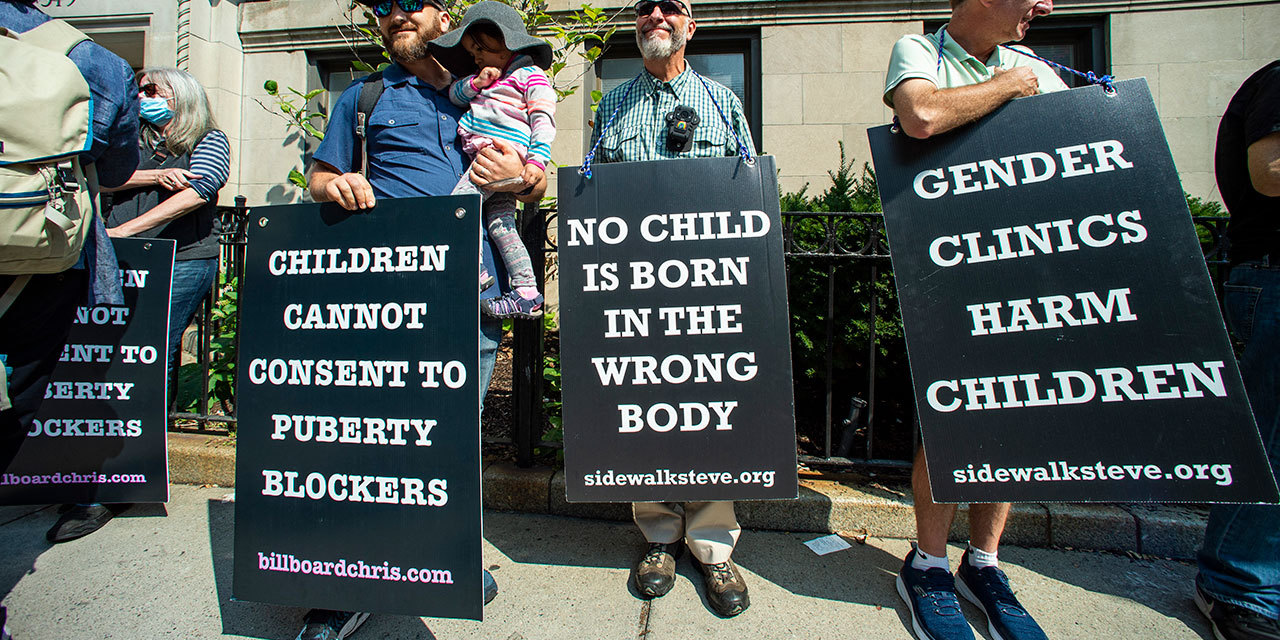The incoming Trump administration wants to improve public safety, push back on progressive cultural politics, and cut wasteful federal spending. One way to do all three? Abolish the Substance Abuse and Mental Health Services Administration, the federal mental-health agency.
SAMHSA was created in 1992 to “reduce the impact of . . . mental illness on America’s communities” and to target services to people “most in need.” The agency has failed on both counts. People with serious mental illnesses, like schizophrenia and other psychotic disorders, remain disproportionately represented among the homeless, incarcerated, and violent-criminal populations. Mental illness has been a factor in nearly all of the deadliest mass shootings, including Sandy Hook, Viriginia Tech, Parkland, Aurora, Uvalde, El Paso, Sutherland Springs, Charleston, Oregon, Navy Yard, Binghamton, Killeen, Lewiston, Austin, Edmond, Pittsburgh, Santa Fe, Boulder, Dayton, Omaha, and Indianapolis—to name only a few.
The agency has not only failed to reduce the impact of mental illness in American life but also has undermined proven solutions by derailing resources from high-quality, intensive psychiatric treatment and advocating against involuntary commitment. Consider SAMHSA’s Protection and Advocacy (PAIMI) Program. The agency claims the program “is intended to protect and advocate for the rights” for people with serious mental illness, but in practice, it often directs funds to lawyers seeking to prevent needed hospitalizations. This can have disastrous results, as it did in 2006, when a mentally ill man named William Bruce killed his mother with a hatchet after SAMHSA-funded lawyers reportedly coached him on how to avoid involuntary treatment.
The federal mental-health agency is also a hub for progressive activism. Seemingly any left-wing priority can win SAMHSA support if proponents claim that addressing it would reduce “trauma” or improve “mental well-being.” Billions of taxpayer dollars have been hijacked for things like “non-traditional holistic support” for “LGBTQI+” families; “affirming, comprehensive care” for “unhoused LGBTQ+ youth”; employee trainings and agency publications on “Diversity, Equity, Inclusion, [and] Accessibility”; bulletins on the behavioral health effects of climate change; “Keep it Safe But Sexy” harm-reduction sessions for the “incarcerated and post-incarcerated socially disenfranchised”; and pop psychology–inspired social-emotional learning programs.
SAMHSA’s nonsense programs are only one reason to zero its budget. The agency’s own employees have ranked it one of the worst places to work in Washington. The Government Accountability Office, meantime, has found that SAMHSA makes unsubstantiated claims, hasn’t properly documented how grantees qualified for funding, and has failed to complete program reviews.
Abolishing SAMHSA would be relatively simple. Its budget is only around $7 billion, and most of its funding comes from discretionary annual appropriations that could be cut off until Congress formally puts the agency out of business. Now is a good time to act: SAMHSA’s budget has doubled in the last ten years, and it will likely continue to grow given the mental health industry’s penchant for getting policymakers to view social issues as “mental health” problems.
The first place for scissors: SAMSHA programs promoting “wellness” among the masses—usually through broad awareness, prevention, and early intervention efforts. The agency’s favored public-health-style approach makes no practical sense: we can’t prevent mental illnesses (the agency itself admits causes are unknown), while basically none of the “worried well” will develop a disabling psychiatric disorder that leads to a cycle of homelessness, arrests, and repeat hospitalizations. Schizophrenia, for example, is exceedingly rare, affecting probably less than 1 percent of the general population. Such “wellness” efforts, which expand access to care indiscriminately, do more harm than good, promoting a victim mindset, making overdiagnosis and misdiagnosis more likely, and driving mental-health-care costs higher and higher.
A handful of the agency’s programs do focus on the seriously mentally ill and are worth keeping. For example, SAMHSA supports some assisted outpatient treatment initiatives, which require a small number of people with serious mental illness who have a history of repeated arrests or hospitalizations to take medication as a condition of remaining in the community. Those programs should continue, but they can be rolled into other agencies within the Department of Health and Human Services.
SAMHSA, however, must go. The agency harms the people it is intended to help, pursues unfounded approaches to mental-health care, and serves as an incubator for progressivism. The Trump administration would do well to put an end to it.
Photo by: Joan Slatkin/Education Images/Universal Images Group via Getty Images





